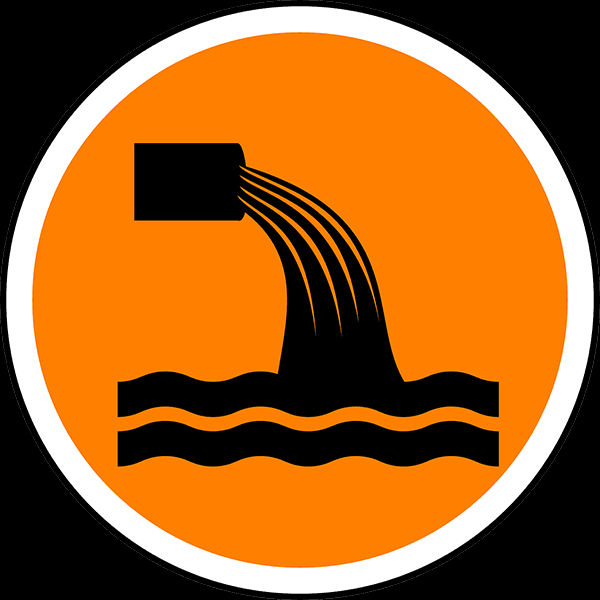Some Of Reclaim Waste
Some Of Reclaim Waste
Blog Article
6 Easy Facts About Reclaim Waste Described
Table of ContentsUnknown Facts About Reclaim WasteSome Known Factual Statements About Reclaim Waste Reclaim Waste Can Be Fun For AnyoneExamine This Report about Reclaim WasteEverything about Reclaim Waste
Domestic sewer waste refers to the waste and items from a domestic septic tank. The appropriate management and disposal of residential sewage waste need fluid waste to be moved to a sewer treatment plant where the appropriate techniques and tools are used to detoxify and dispose of waste.
Commercial waste typically consists of potential risks, such as flammable materials or a blend of liquid and solid waste items, and needs an advanced and comprehensive disposal procedure. The disposal of business waste typically entails the purification of waste prior to transport to ensure secure and proper disposal. Hazardous waste is created from by-products and runoff of commercial procedures and production.
This kind of waste can not use the same sewer monitoring transportation or processes as septic or commercial liquids. The commercial waste monitoring procedure needs the inspection and screening of fluid waste prior to it undertakes the disposal procedure (industrial wastewater treatment). Runoff waste is the liquid waste that originates from overflow and excess stormwater in highly booming locations or cities
Overflow waste can create contamination and flooding if not taken care of appropriately. Ensuring proper waste administration can prevent catastrophes and minimize ecological injury.
About Reclaim Waste
Get in touch with PROS Providers today to find out about our waste administration and disposal services and the proper means to look after the liquid waste you produce.
(https://hub.docker.com/u/reclaimwaste1?_gl=1*1980ev1*_ga*MTgwOTc3Nzc2OS4xNzMxMzI1Mzkw*_ga_XJWPQMJYHQ*MTczMTMyNTM5MC4xLjEuMTczMTMyNTcwOC4xMC4wLjA.)Do you recognize what takes place to your water when you disengage, flush the bathroom or drain pipes the washing maker? No? Well, it deserves understanding. This so-called 'wastewater' is not only a crucial resource however, after therapy, will be launched to our land, waterways or the sea. Used water from bathrooms, showers, bathrooms, kitchen sinks, laundries and commercial processes is called wastewater.

water made use of to cool equipment or tidy plant and tools). Stormwater, a kind of wastewater, is drainage that streams from agricultural and city locations such as roof coverings, parks, gardens, roads, paths and rain gutters right into stormwater drains, after rainfall. Stormwater moves without treatment directly to local creeks or rivers, eventually getting to the sea.
Getting The Reclaim Waste To Work
In Queensland, most wastewater is treated at sewage treatment plants. Wastewater is transferred from domestic or industrial sites with a system of drains and pump terminals, recognized as sewage reticulation, to a sewer therapy plant. City governments develop, preserve and operate most sewage treatment plants. Operators are accredited under the Environmental Security Act 1994 to discharge treated wastewater at an acceptable environmental standard right into rivers.
The Department of Natural Resources encourages city governments about handling, operating and preserving sewage systems and treatment plants. In unsewered locations, regional governments may call for owners to set up individual or household sewer therapy systems to treat residential wastewater from commodes, kitchen areas, shower rooms and laundries. The Division of find here Natural Resources authorizes making use of household systems when they are confirmed to be reliable.
In some new communities, therapy of some stormwater to eliminate clutter, sand and gravel has actually begun making use of gross pollutant catches. Wastewater treatment happens in four stages: Removes solid matter.
Wastewater then streams right into large containers where solids work out and are gotten rid of as sludge. Grease and residue are skimmed from the surface area. Utilizes little living organisms recognizes as micro-organisms to break down and get rid of staying liquified wastes and great bits. Micro-organisms and wastes are integrated in the sludge. Eliminates nitrogen and phosphorus nutrients that might cause algal flowers in our rivers and intimidate aquatic life.
Some Known Details About Reclaim Waste
Nutrient elimination is not available at all sewage treatment plants because it requires expensive specialist tools. Clear liquid effluent produced after therapy may still consist of disease-causing micro-organisms - liquid waste disposal melbourne.

This typically implies wastewater needs to be dealt with or pollutants removed before it can be released to waterways. A lot of wastewater flows right into the sewerage system. Under the Act, local federal governments provide approvals and permits for ecologically relevant tasks (ERAs) entailing wastewater releases that could have a regional impact. The division administers authorizations and licences to Periods including wastewater launches that may have a local or statewide effect.
6 Simple Techniques For Reclaim Waste
Tracking supplies accurate info regarding water top quality and can validate that permit problems are being satisfied. The info acquired with monitoring offers the basis for making water high quality decisions.
Report this page